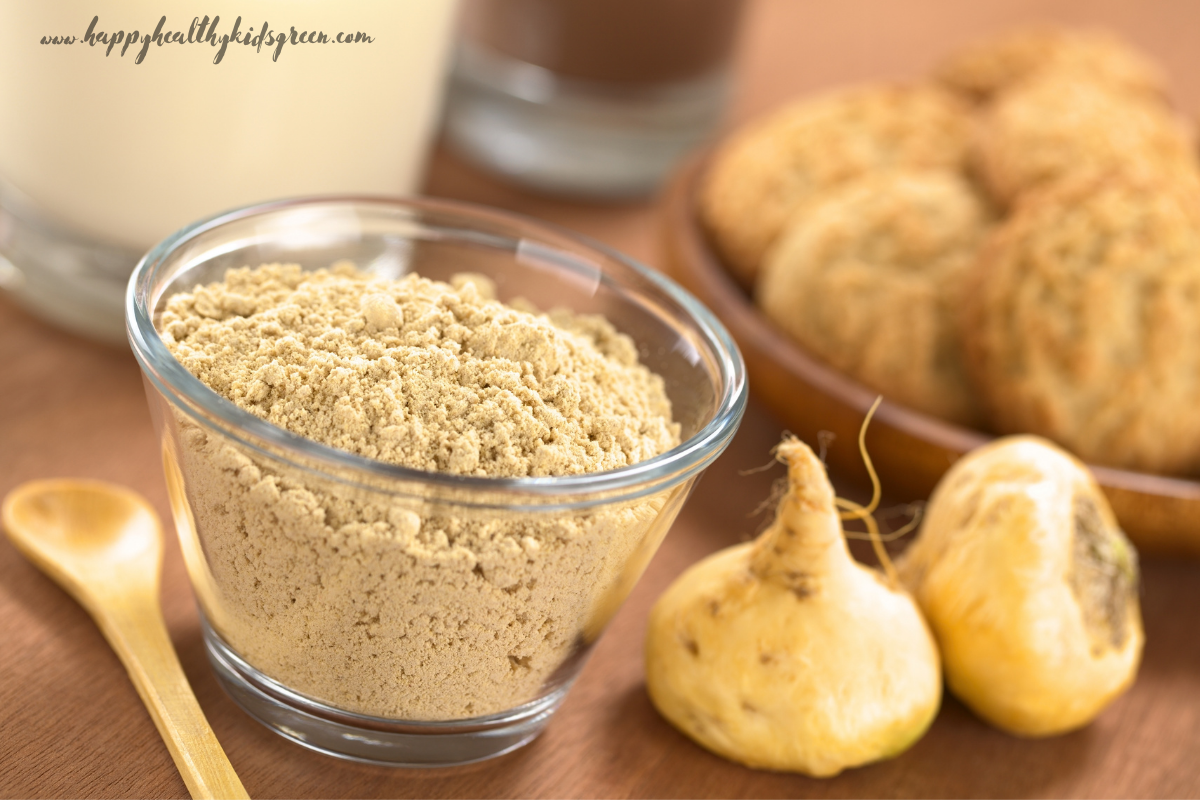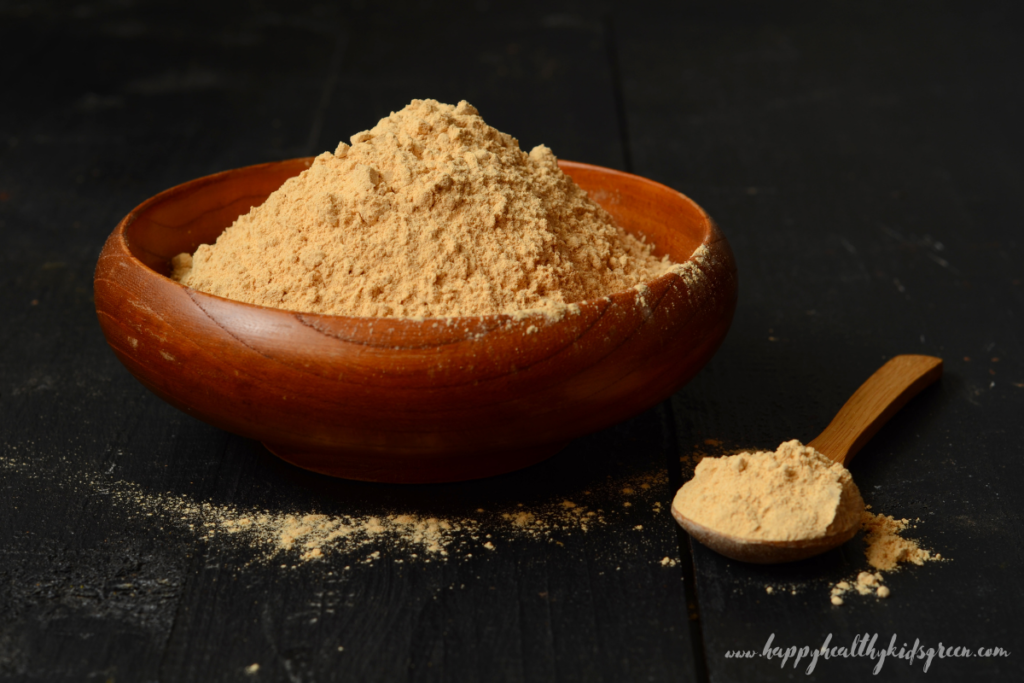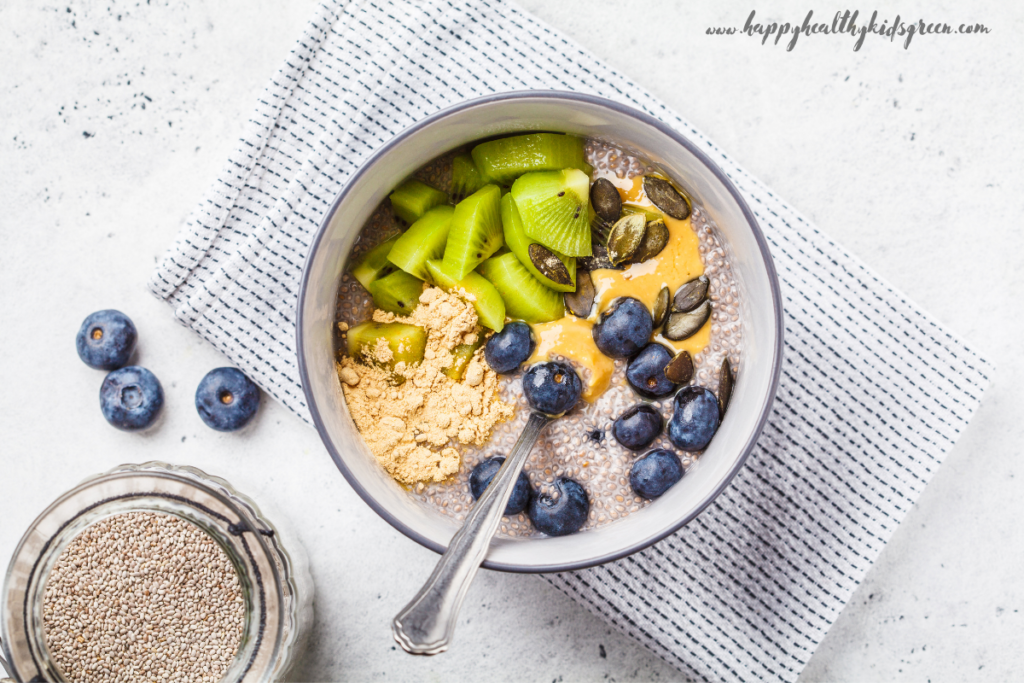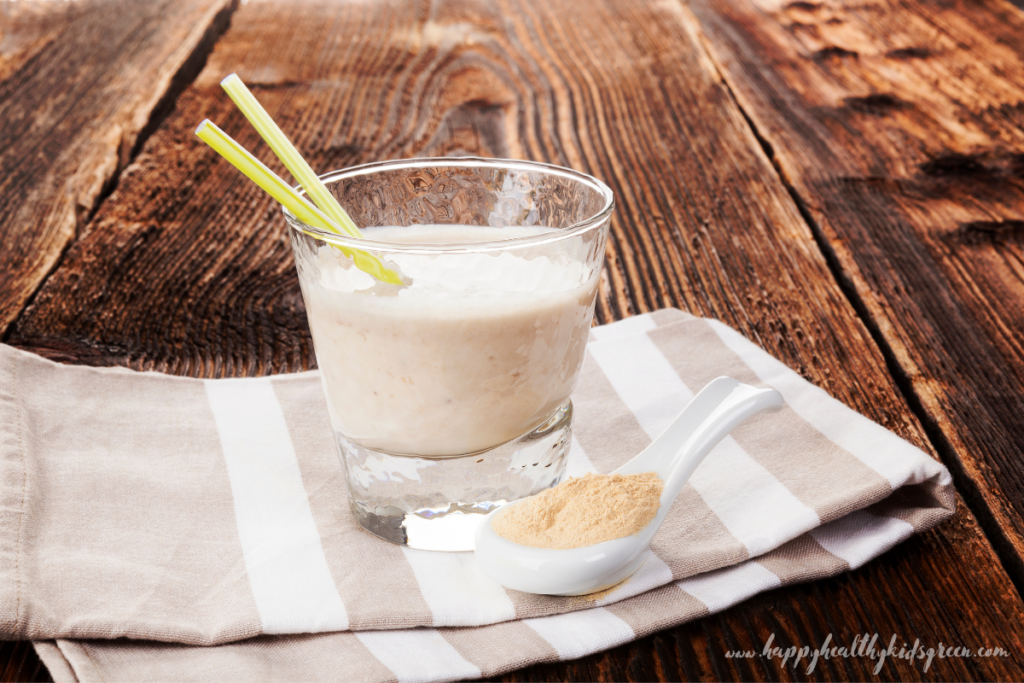MACA- MACA ROOT

Maca is a plant whose “roots” go back to the Peruvian Andes. Maca is derived from the root of a cruciferous vegetable native to Peru, and is related to broccoli, cauliflower and kale. The root, which is the edible part of the vegetable, looks similar to a cross between a parsnip and radish, with green, leafy tops. It’s typically consumed as a ground powder. It is unique not only because of its properties, but also the environment in which it develops. It grows in exotic climatic conditions, taking advantage of the properties of rocky soils. Maca perfectly uses the inaccessibility of nature, providing organisms with what is unattainable for other plants. It dominates the whole of nature, as its roots develop at an altitude of 3,500 meters above sea level, resembling a common radish. Maca is a plant with a centuries-old tradition. It was used 2000 years ago in San Blas, Junin (now in Peru) by the Incas. The first records of the use of its root come from 1553. 100 years later, the Spanish priest Cobo described Maca as a fertility-enhancing plant. It was brought to Europe by Captain de Soto around 1549. He received it as a gift. Since then, it has gained publicity for its fantastic properties not only in South America. To this day, the people of Peru use it as a food source.

A MACA PLANT WITH MANY NAMES
Maca is a multidimensional plant, also due to its original nomenclature:
- Lepidium meyenii, Walpers (from the German botanist Gerhard Walpers, who researched it), and it’s the main name, or Lepidium affine Wedd. or Lepidium gelidum Wedd.
- Lepidium peruvianum G. Chacón (Chacón is a Walpers employee who tried to change the name. However, it is Lepidium meyenii, Walpers that is considered correct by the Peruvian government)
- Peruvian ginseng
- Peppergrass
- Pepper herb
- Maca (from Spanish)
- Maca-Mac (from Kechuan)
- Maino (from Kechuan)
- Ayak Willku (from Kitschuan)
The Maca root is one of the SUPERFOODS. Its health properties were already appreciated by the Incas. Maca root was not only food for them, but also medicine.

MACA-OPERATION AND PROPERTIES
Maca grows from seed and is similar to a radish. A couple of root colors can be distinguished: cream, yellow, light pink, red, black, purple, green. It is pepper and belongs to the cabbage family, just like rape and mustard. Despite the fact that it is grown at high altitudes, the plant itself does not reach large sizes (10-20 cm). Maca has a very solid root with a circumference of about 15 cm. Some researchers believe that Peruvian ginseng is a biennial plant, others believe that it can be grown longer. Maca matures for 8 months and its leaves resemble a rosette. The flowers are found in small clusters around the base of the plant. The fruits, which are also the roots, are hard and colorful. Peppergrass does not have universal properties for the human body. Men and women react to it differently.
Maca – for women:
- Black maca is responsible for building muscles
- The plant is an excellent source of energy
- Is responsible for the endurance of the body
- Red maca increases libido and fertility, and regulates the hormonal balance during menopause
- Decides to improve the skin tone
- Prevents osteoporosis
- Improves concentration
During the study, some of the studied rodents received an ethanol extract from poppy seeds at a dose of 240 mg / kg by the oral route for 28 weeks. The control group consisted of ovariectomized female rats that did not receive the extract, as well as non-ovariectomized rodents. It turned out that the administration of the maca root causes a marked increase in bone mass, restores normal bone structure and increases the calcium content in bone tissue. On this basis, it can be assumed that the administration of high doses of maca for a sufficiently long time to postmenopausal women allows for complete protection against the removal of estrogens from the body and maintenance of bone mineral density.
Maca has an anti-depressant effect. Maca root is a powerful adaptogen with immune-boosting properties. Due to its wide action, it is non-toxic and can be consumed for a longer period of time. It allows us to survive the difficult moments of mental and physical stress that are associated with our fast everyday life. It helps our body to stay in a state of homeostasis, stabilizes and balances the systems in our body.

Maca – for Men
- Black maca is responsible for building muscles
- Increases energy and endurance
- Reduces erectile dysfunction
- Improves hair growth
- Decides about strong teeth and bones
- Is responsible for the health of the prostate
- Is responsible for the improvement of semen parameters; the studies showed an 80-90% increase in the number of sperm in the ejaculate, with an increase in their mobility. The sperm count also improves.
Maca is an excellent energy activator. Swimming tests carried out on rodents proved that mice fed Maca swim 30% longer than those in the control group. The plant has the same properties as selective estrogen receptor modulators, thanks to which it activates the pathways responsible for building new bones. In addition, it reduces the risk of cancer cells development thanks to secondary metabolites (benzylglucosinolates and anthocyanates). Maca also slows down the aging process thanks to antioxidants that reduce free radicals. The Q’ero Indians, who lived in the Junin Plateau in Peru, lived like their ancestors, usually lived to be 100 years. Peppergrass is also great for fighting anemia. It also contributes to the reduction of prolactin when combined with the diet.
Maca root powder is used in hair and skin care cosmetics to increase collagen synthesis. Thus, the plant improves the tone and appearance of our skin. Thanks to many years of tradition, it fights the problems of our times and future generations. Peruvians brew the dried root with milk or water to obtain an aromatic mush. In addition, they make a flour from the dried root, which they then use to prepare everyday dishes and baked goods.
Maca root can also be used to make a popular, sweet, aromatic, fermented drink called “maca chicha”, which is often mixed with strong alcohol to make “coctel de maca”.

Studies suggest maca may lift mood and improve quality of life scores. May boost energy and sports performance
Maca may help increase exercise performance, especially in endurance athletes, such as those who partake in swimming and cycling.May improve memory and aid learning
Native Peruvians are said to use maca to improve their children’s learning in school. Animal studies also support its ability to improve brain function and memory in the elderly.
MACA – NUTRITIONAL VALUES
Maca contains a lot of amino acids, nutrients, fatty acids, vitamins and minerals.
According to NutritionData.com, the plant consists of:
- 59% of carbohydrates which, when combined with alkaloids and other nutrients in peppergrass, provide energy
- 10.2% of vegetable protein that is easily digestible by organisms
- 8.5% Fiber – Maca contains relatively large amounts of cellulose and lignin, which stimulate bowel function. Fiber is a key element for the proper functioning of the digestive system
The plant is a complete source of amino acids, especially those responsible for sexual function. It consists of:
- Aspartic acid (97 mg / 1g of protein)
- Glutamic acid (156 mg / 1g of protein)
- Serine (50 mg / 1g of protein)
- Histidine (22mg / 1g protein)
- Valine (79mg / 1g of protein)
- Glycine (68 mg / 1g of protein)
- Threonine (33 mg / 1g of protein)
- Alanine (63 mg / 1g of protein)
- Tyrosine (31 mg / 1g of protein)
- Phenylalanine (55 mg / 1 g protein)
- Methionine (28 mg / 1g of protein)
- Proline (5 mg / 1g protein)
- Lysine (55 mg / 1g of protein)
- Leucine (91 mg / 1g protein)
Maca contains as many as twenty fatty acids important for the body, including 40% saturated and 55% unsaturated. The plant contains:
- Linoleic acid – 33%
- Palmitic acid – 24%
- Oleic acid – 11%
- Stearic acid – 7%
- Palmitoleic acid – 3%
VITAMINS IN MACA ROOT
Maca is also an excellent source of vitamins:
- Thiamine (B1) – 1 mg / 100g. It is responsible for tissue respiration and the conversion of carbohydrates. In addition, it is an element of the carboxylase coenzyme, thanks to which it stimulates the work of hormones and sex glands. Thiamin accelerates the regeneration of wounds, supports the work of the heart and nervous system.
- Riboflavin (B2) – 76 mg / 100g. It is important for the development of the body as it is responsible for the production of red blood cells.
- Niacin (B3) – 35 mg / 100g; the substance improves blood circulation by cooperating in the synthesis and breakdown of carbohydrates, fatty acids and amino acids. Vitamin is involved in metabolic changes responsible for the release of energy. In addition, it regulates cholesterol levels by expanding blood vessels.
MACA ROOT MINERALS
Peppergrass is also rich in minerals:
- Copper (5 mg / 100g) is responsible for the formation of red blood cells, affecting the membrane that surrounds nerve cells, creating the necessary impulses in the brain. Copper is part of the enzyme dismutase with antioxidant properties.
- Zinc (12 mg / 100g) is involved in metabolic changes, influencing basic life processes. In addition, it ensures an adequate level of bone mineralization and is responsible for the secretion of insulin by the pancreas.
- Manganese (8 mg / 100g) is essential for the development of bone tissue and the proper functioning of the nervous system. It is a component of hair and skin dyes. Additionally, it influences sexual development and the improvement of reproductive processes.
- Iron (25 mg / 100 g) is one of the micronutrients that affect the proper functioning of the body. It occurs in many important enzymes: catalase, peroxidase and cytochromes.
Maca, thanks to its rich nutritional properties, is a natural “golden mean” that supports the proper functioning of the body.
Secondary metabolites are chemical compounds produced by plants. The maca root contains:
- Glucosinolates
- Steroids
- Isothiocyanates
- Flavonoids
- Saponins
- Alkaloids
- Anthocyanins
- Alkanes
- Prostaglandins
- Tannins
- Uridine
- Beta-carbolines
- Malic acid
- Macamids
- Macaeny (macaenesy)
Each of these metabolites has certain properties. Flavonoids get rid of the formed free radicals, which are not our ally. Isothiocyanates reduce the likelihood of liver and breast cancer.

MACA – DOSAGE
The most effective way to take Maca powder is to mix it with water or fruit juice and consume it on an empty stomach, 10-15 minutes before eating breakfast. Consumption of peppergrass on an empty stomach increases the amount of nutrients absorbed. The plant is perfect as an addition to vegetable and vegetable cocktails, purees and other foods. This product can now be purchased in tablets, drops and powder. The range is from a small teaspoon to even a tablespoon or two a day. The grammage of the product varies depending on the organism’s needs and application. You can start with small amounts and increase as needed as your body adapts. This will not cause too much shock to the endocrine system. It is worth taking breaks in supplementation. The powder can be used as an addition to cocktails, salads and soups.
MACA – DOUBTS AND FEARS
Maca Root is an adaptogen, so it can be used without any problems. It is not toxic, and even removes harmful substances from our body. However, men with inflammation of the prostate gland may experience some pain due to increased blood supply to the sexual organ. However, some people should exercise caution. These include those with a thyroid condition who are advised to minimise cruciferous vegetables such as maca. This is because this family of vegetables contains substances known as goitrogens, which may interfere with normal thyroid function.Maca has a lot of potassium, so people suffering from kidney diseases should be careful about it. Women who are pregnant or breastfeeding should check with their doctor before consuming maca. If you are considering any major dietary changes or intend to supplement your diet, please consult your GP or registered dietician to ensure you may do so without risk to your health.
MACA – HOW MUCH COSTS?
Ecological Maca root in a powdered form can be purchased for as little as 2GBP. The recommended dose is approx. 3-5g (a small teaspoon) daily with water or your favorite drink. The product is also recommended for cocktails, juices, salads, salads, yoghurts, desserts or as a flour for home baking. Maca is also suitable as an ingredient in filling or as a sprinkle. The price depends on the manufacturer and the form of the product. It is worth taking care of the right amount of Maca in your daily diet, using the long tradition of the ancient Inca and, like them, enjoying a long and healthy life.

